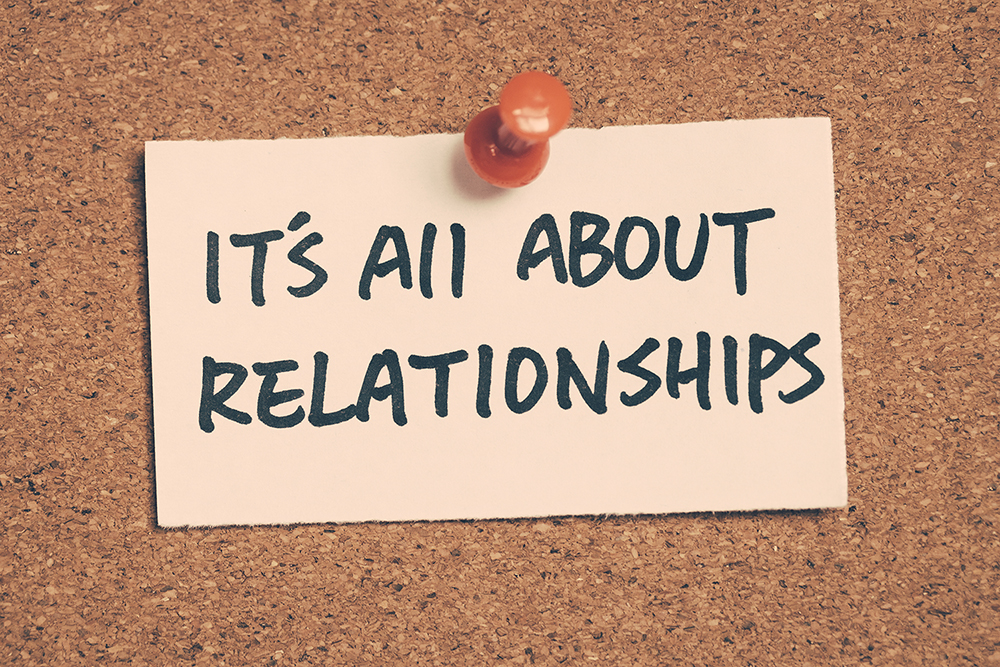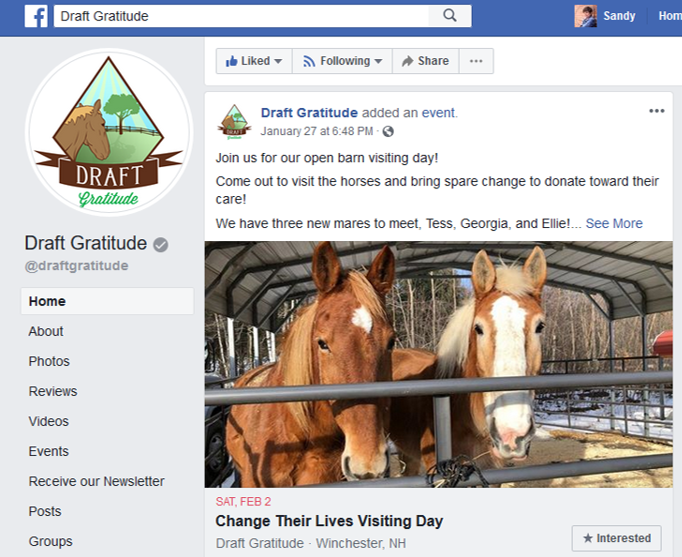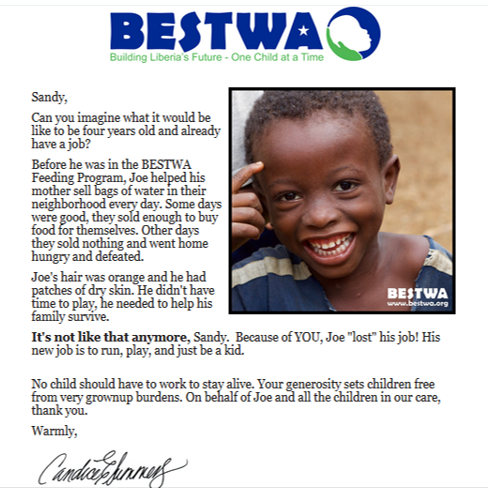Managing a donor relationship can be tricky. Yet it’s KEY to successful fundraising.
I bet you’ve said or heard this at some point in your life: “It’s like you don’t understand me at all.”
It’s frustrating when you feel misunderstood.
We tend to leave or end relationships when the other person doesn’t get us.
Heck, I left a marriage years ago because my ex was so focused on himself, he didn’t even TRY to understand me.
Understanding someone and doing the little things that show them you know their likes and dislikes keeps a relationship healthy and alive.
You with me so far?

Now think about how that applies to your donors.
What do you know about the people who give to support your work?
What do they want from their relationship with your nonprofit?
How are you giving them what they want?
Since it’s the season of love, it’s a great time to be thinking about showing people that you care.
That includes donors.
A donor relationship isn’t that different than a relationship with a good friend or sweetheart.
It grows and evolves through four distinct stages. If you want to keep your donors around and keep them giving, you have to show them the love at each stage.
Let’s see what that looks like…
4 stages of a donor relationship
There are 4 stages of a donor relationship that donors can grow through.
Your goal is to get them to the 4th stage where they’re committed to helping your nonprofit fulfill its mission.
It’s important to think about how you’re communicating with donors in each stage and how you’re showing them some love so that the relationship grows.
Pay attention here – this is all about donor retention and keeping donors happy.
Stage 1: Introduction
 Every donor relationship starts with an introduction.
Every donor relationship starts with an introduction.
Whether someone introduces you or you introduce yourself, you have to meet someone first before you can get to know them.
You can meet new people in lots of ways – through current volunteers and Board members, at an open house, through social media, and more.
In this stage of the relationship, your goal is to make new friends for your nonprofit. Your message is simple: Explain the need your nonprofit addresses and why it matters. One key stat about the size of the need or your Impact Goal can attract your new acquaintance to your mission.
What donors want in this stage: Donors want to know what you’re trying to do that matters and they want it quick.
They don’t yet care enough to patiently listen to all the details of your programs and they certainly won’t be impressed with all your credentials so don’t bother sharing that.
Tease them with enough juicy info to get them interested. Give them a reason to start caring about your nonprofit’s work.
Here’s a great visual from the home page of the Humane Society of Southeast Missouri. Notice there’s not much text, but it’s strong enough to pull you in if you care about animals.

Remember that you only get one chance to make a good first impression, so make sure your materials are focused on your donor’s wants, not on what your fundraising committee decided to share.
Stage 2: Discovery
In stage 2 of the donor relationship, our theme song is “Getting to Know You” and if you’re a Broadway musical nerd like me, you recognize that song from “The King and I.”
Seriously, after you meet someone, the next step is to figure out if you like them or not, because no one wants to spend time with someone they don’t like.
Your focus in this stage is to educate and engage your new friends. That DOES NOT mean tell them every last detail about your nonprofit. Instead, tell them just enough so they understand what your nonprofit does, how you’re making a difference, and why it matters.
Be very careful here not to overshare. It’s so tempting to want to tell people EVERYTHING about your nonprofit, especially if you’re trying to be transparent.
But, put yourself in the donor’s shoes – do you want to try to absorb a ton of information all at once? It’s like trying to get a drink of water from a fire hose (probably not going to work out too well). You may need to drip some key info out to your new friends through an email sequence designed to bring them up to speed slowly, with stories and video that will have people leaning in to get a better look.
What donors want in this stage: One of the BIGGEST things donors want is to know you’re trustworthy. They want to know that you’re doing good work, well managed, organized, and reputable.
No one wants to be associated with a sinking ship or a shady operation.
Some of your best tools for meeting the donor’s need for information are newsletters, social media, and facility tours. You can show them what you’re doing and nurture the ideas already forming in their mind of how they can get involved.
Here’s a great example of a Facebook event from our friends at Draft Gratitude about their monthly visiting day. Every month, they host an open house at their barn to show people what they’re doing to save horses. They always get new donors, new volunteers, and even a few donations throughout the day, even though it’s not meant to be a fundraiser.

One key here – ALWAYS invite their questions and comments.
All relationships are built on communication and trust. If you don’t give them a chance to call or email you, your communication is one-sided, which limits the growth of the donor relationship. Think about it: do you want to get to know someone who only talks about themselves all the time?
Stage 3: Decision
After you’ve educated and engaged folks, it’s time to ask them to take the next step in the donor relationship and get involved.
Yep, it’s time to ASK for money. Or ask them to buy an event ticket. Or purchase something. Maybe volunteer.
If you’ve done a good job in the first two stages, this one is easy.
If you’ve been focused on the money and ignored the donor’s needs, this stage will be a struggle.
It’s really that simple.
Your focus in this stage is to ask the donor to do ONE THING to get more involved. When asking for money, ask them to give something meaningful, not “Give to our annual fund.” Donors don’t know what an annual fund is.
What donors want in this stage: They want to know that they can trust you and that their money will go toward programs, not toward lavish staff retreats.
Your message in your ask should ring of partnership and value. Say something like this to get the gift: “Your donation of x will do y.”
Here’s a great example from Illuminate India. Last year for Giving Tuesday, they asked donors to give to one of 3 things. Look how easy it is to understand. This worked so well for them, they tripled their results from the previous year!

The key here is to share your Core Number which tells people how much it costs you to deliver a unit of service. When you calculate this number correctly, it includes both direct and indirect expenses so you aren’t scratching your head trying to figure out how to fund your overhead.
Stage 4: Commitment
Most people think that once they get the donation, they’re done.
Nope. Nuh uh. Not even close.
In this stage, your job is to steward the donor and make them feel really good about giving. What you do after the gift will largely determine if there will be another gift.
Your focus here is to thank the donor and do it WELL. No boring thank-you letters. No generic “Dear friend.” You need a rich, juicy thank-you that sets their heart on fire.
Later, update them about how their money was used and what happened as a result. People love to know that their donation made a difference in someone’s life, and when you share that in a simple note, a phone call, or a video, it solidifies the donor’s commitment to your nonprofit.
Your job here is to make sure the donor has a great experience.
What donors want in this stage: Donors want to know they made a good decision, so thank them well, show them you’re worthy of their donation, and use lots of hero language like “You made this possible.” or “We couldn’t have done this without you.”
Here’s a fabulous example from BESTWA of hero language in a thank-you email. The subject line was “Thanks to you, Joe lost his job”

The Bottom Line
Donors are more than just an ATM or a checkbook. They have wants and needs, and the better job you do of understanding them and giving them what you need, the more they’ll support you and the more successful your nonprofit will be.
What donors want is to:
- Feel appreciated
- Know their donation made a difference
- Receive communications that feel personal even if they’re going to your whole list
- Get info in short, easy-to-read formats like infographics, photos, and video
- See transparency in how you handle money
- Have a choice in how often they’re asked, how they’re asked, and what their money is used for
- Read and watch stories and updates that make them smile






Leave A Comment